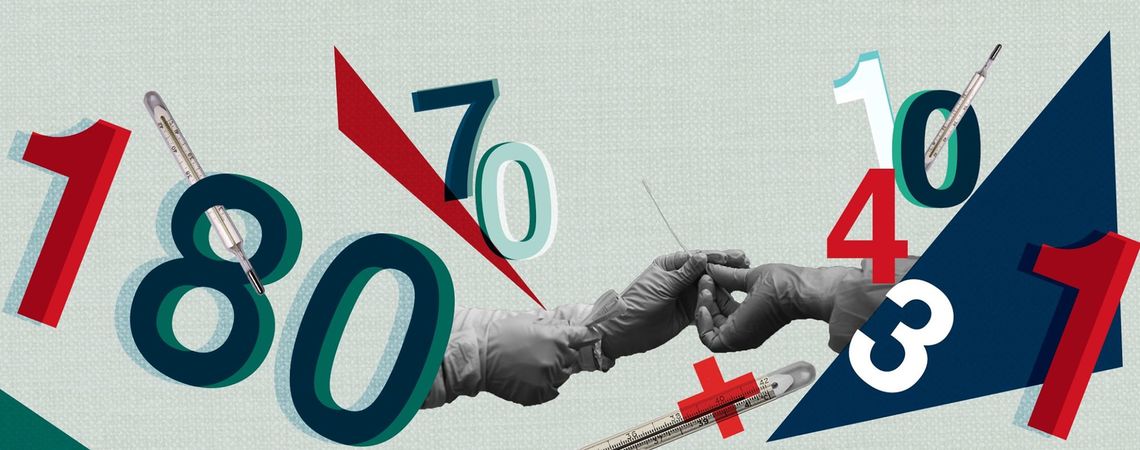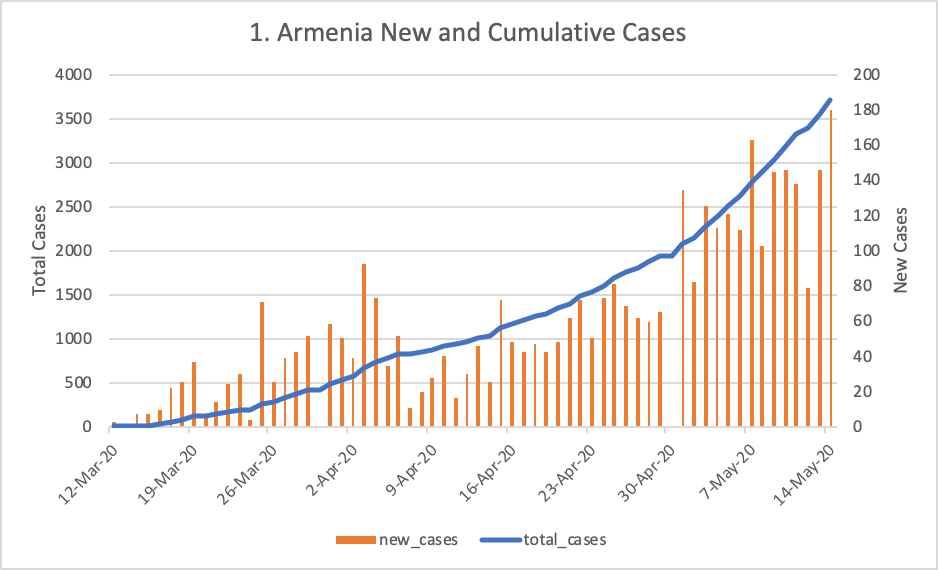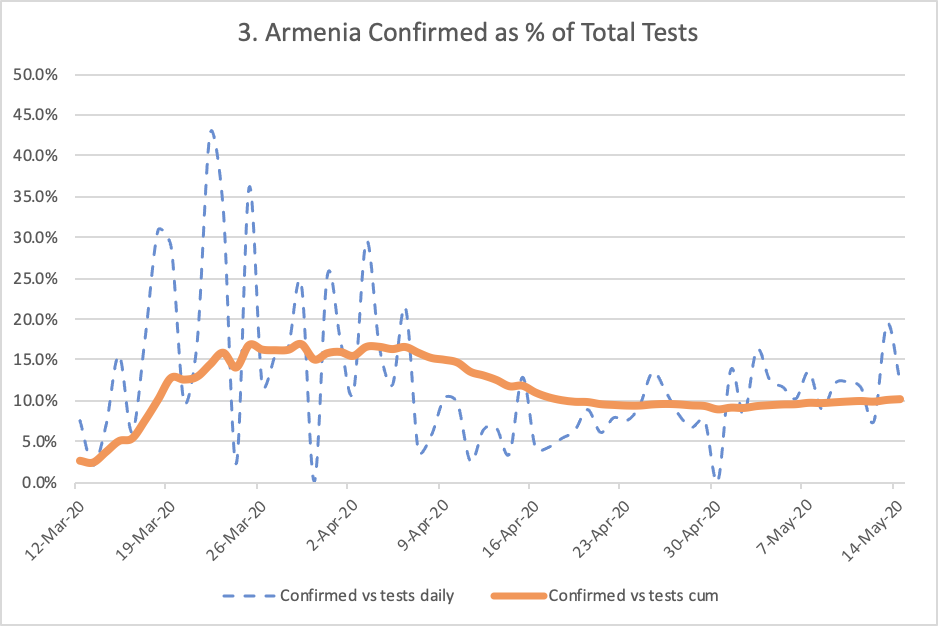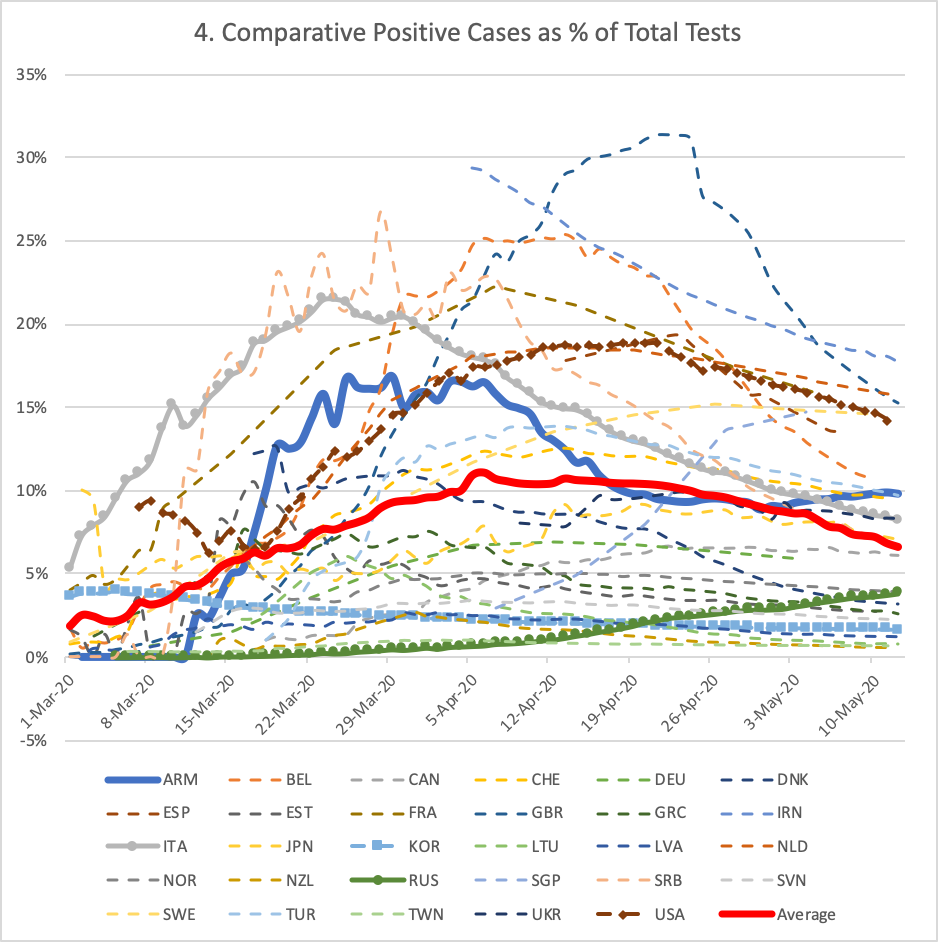


Could it be that the greater number of cases is purely driven by more testing? One way to measure this is to look at the number of confirmed cases as a percentage of tests conducted – in other words, if the infection rate in the population was increasing significantly, then the number of positive cases as a percent of tests would increase as more sick people would turn out to be tested.
Let’s look at the progression of percent of tests which were positive, starting on March 12 – Figure 3 shows the daily percentage (blue line), as well as the cumulative percentage (that is, the total number of confirmed cases as a percent of total number of tests – orange line):

As we can see, although the daily percentage can vary (presumably due to testing of suspected “hot spots” such as affected factories or contact-tracing following major exposure incidents), the percent of positive tests has remained around 10% for the past three weeks, even as the number of daily tests has increased. While this does not mean that Armenia has “flattened the curve” of Covid-19, since the number of daily identified cases is not dropping, neither does it mean that there is a significant increase in the number of cases indicating a critical worsening of the situation. Another important factor to keep in mind is the “selection bias” inherent in a testing policy which focuses on testing only people with relevant symptoms, and contact-tracing individuals who have been exposed to confirmed cases or events. One would expect the tested population’s infection rate to be higher than the general population, since they are being tested precisely because they are “at risk.”
We can also compare Armenia to a number of other countries who report total tests in addition to confirmed cases and deaths.1 This group includes both countries with very effective coronavirus responses, those who faced significant challenges, and those in the middle – South Korea, Italy, Russia and the U.S. are highlighted (Figure 4). As we can see, Armenia is above the average of the 29 countries included, and the divergence of the past week indicates that Armenia has not yet reached the apex of the spread of the disease.

It is therefore imperative for the government to continue the policy of testing, contact-tracing and isolation to manage the progress of the pandemic even as economic and social factors necessitate the gradual easing of restrictions and re-opening of the economy. Checking the number of tests administered is as important as tracking the number of new confirmed cases and deaths – think of it as a way to oversee the effectiveness of the government’s efforts to contain and manage the disease. At the same time, it is the responsibility of every citizen, and every public and private organization, to employ maximum caution and protection as they re-start activities, so that the number of cases can remain manageable. Perhaps we can think of the response to the pandemic as the ultimate, nationwide public-private partnership.
—————————

